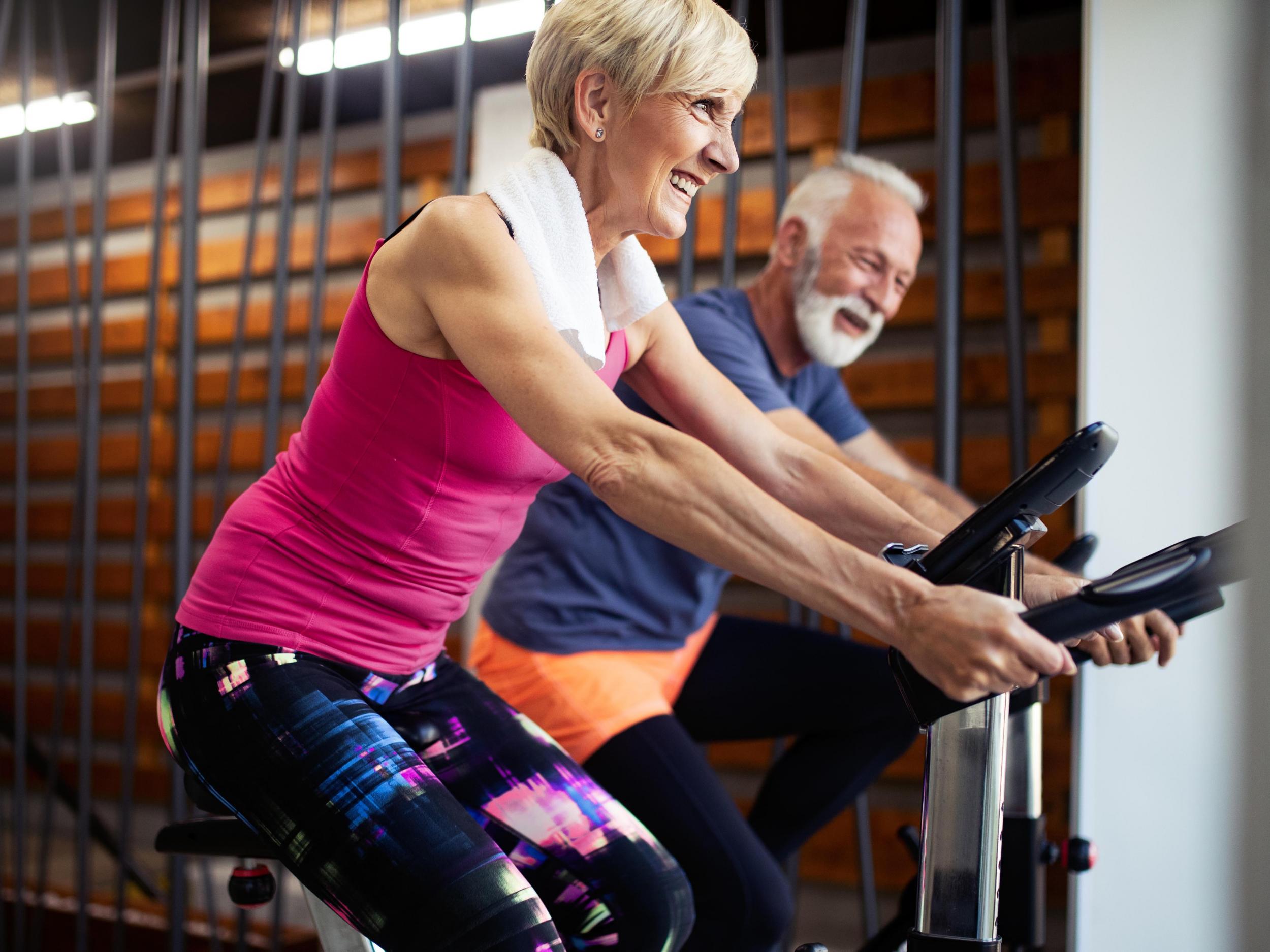The best ways to exercise after 60
Keeping active can slow ageing and increase life expectancy

Your support helps us to tell the story
From reproductive rights to climate change to Big Tech, The Independent is on the ground when the story is developing. Whether it's investigating the financials of Elon Musk's pro-Trump PAC or producing our latest documentary, 'The A Word', which shines a light on the American women fighting for reproductive rights, we know how important it is to parse out the facts from the messaging.
At such a critical moment in US history, we need reporters on the ground. Your donation allows us to keep sending journalists to speak to both sides of the story.
The Independent is trusted by Americans across the entire political spectrum. And unlike many other quality news outlets, we choose not to lock Americans out of our reporting and analysis with paywalls. We believe quality journalism should be available to everyone, paid for by those who can afford it.
Your support makes all the difference.Ageing is inevitable and is influenced by many things – but keeping active can slow ageing and increase life expectancy. Evidence shows that ageing is not a cause of major problems on its own until you are in your mid-nineties, and strength, power and muscle mass can be increased, even at this advanced age.
So here are my top exercise tips for people in their sixties and older, at different levels of fitness.
For lifetime fitness fanatics
If you fall into this group, you are in the minority. You are robust, likely to be a “super-ager” and you are doing wonderfully. You are certainly optimising your chance of living longer and ageing successfully.
Generally, this is when you reap your reward from a lifetime of keeping active. With your healthier metabolic, skeletal, cardiovascular and immune systems, you can probably outperform people decades younger.
Keep up the kettlebells, spin classes, rowing, triathlons or manual work such as gardening – whatever you like to do. You can keep challenging yourself physically. Mix your routine up – a combination of aerobic and resistance work as well as an activity to challenge your balance is ideal.
Maximise health benefits by swimming outdoors and as part of a community. You might want to try sea swimming, although it’s not for everybody.
But watch out for chronic overloading; that is, diversify your exercise programme by incorporating cross-training. For example, if you are a runner, incorporate cycling or swimming to avoid overloading any part of your body.
Recovery after strenuous exercise is slower as you age and can take up to five days. So exercise smart.
For the averagely fit
You are doing well, so keep going. Long-term consistency is the key to benefits. You don’t necessarily have to join a gym – just keep building meaningful physical activity into your day. For example, walk briskly to the shops to get your groceries, keep up gardening and be active around the house. Even repeating simple stair-climbing is a great exercise.
If you are suffering from hip or knee pain, walking may be painful, so try cycling or water-based exercise instead.

Coupling physical activity with social engagement can optimise its benefits, so try yoga or a dance class. Incorporate some outdoor exercise for an added mental-health boost.
The main thing is to avoid long periods of sitting. Also, ideally, continue to do the exercise you enjoy. Try to steadily build up your level of aerobic exercise to where you build up a sweat and feel slightly out of breath.
Strengthening and flexibility exercises are often neglected, so try to include these type of exercises where possible.
For the unfit or unwell
You may be managing complex chronic conditions, which make it more difficult to exercise. Or it may be that exercise is not a habit for you. If you have several chronic conditions, you may need clearance from a doctor to exercise and specialised exercise advice from a physiotherapist or other exercise professional.
If you are experiencing three or more of the following: unplanned weight loss, exhaustion, slowness, weakness of grip and physical inactivity, you may be considered frail, which will leave you vulnerable to even minor health stresses. But it is never too late to build more physical activity into your daily life.
Merely reducing time spent sitting and doing a little exercise will have major health benefits, and doing any type of activity at all is better than none. Even chair-based exercises or practising sit-to-stand can be a great start.
Feeling a bit out of breath during and after exercise is normal and some initial aches and joint pain are fine. But if you ever feel chest pain or severe discomfort, you need to see a doctor straight away.
If you have a setback such as a chest infection or fall that results in a hospital admission, get up and moving as soon as is safely possible. Even a few days of bed rest can result in major decreases in strength and fitness.
If you have surgery scheduled, being as active as possible before admission to hospital and starting moving as soon as possible afterwards will help your recovery. These may also prevent complications that could prolong your stay in hospital.
If you are diagnosed with cancer, keep active, even during such treatments as chemotherapy and radiotherapy, and during recovery. If you have other common chronic conditions, such as heart or lung disease, keep as active as your condition allows.
Just remember: whatever your state of health, it’s never too late to reap the benefits of being more physically active.
Julie Broderick is an assistant professor in physiotherapy at Trinity College Dublin. This article first appeared on The Conversation
Join our commenting forum
Join thought-provoking conversations, follow other Independent readers and see their replies
Comments